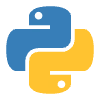Web Scraping, Data Cleaning, and Analyzing SpaceX Data
SpaceX-Falcon-9-first-stage-Landing-Prediction
In the vast expanse of space exploration, the successful landing of a rocket's first stage is a critical achievement. It not only saves valuable resources but also advances my understanding of reusability in space travel. The journey towards this goal is the focus of my Data Science Capstone Project, a comprehensive endeavor that involves various stages, each contributing to the overarching mission: predicting the successful landing of SpaceX's Falcon 9 first-stage rockets.
1. Collection of SpaceX Data (Using Web Scraping & SpaceX REST API): My voyage begins with the collection of invaluable data. I embark on a data-gathering expedition, utilizing the power of web scraping techniques and the SpaceX REST API. I pull together a wealth of information, including launch data, telemetry, and rocket specifications. This meticulous process lays the foundation for my data-driven exploration.
2. Data Wrangling: With a treasure trove of data in my hands, I dive into the intricate process of data wrangling. I sift through the raw information, cleaning, organizing, and preparing it for analysis. Missing values, outliers, and inconsistencies are carefully addressed, ensuring that my dataset is robust and reliable. This stage is the crucible where data takes shape and prepares for the journey ahead.
3. Exploratory Data Analysis (With SQL & Data Visualization): In the vast sea of data, patterns, and insights await discovery. Armed with SQL and powerful data visualization tools, I embarked on a voyage of exploration. I unearth hidden trends, correlations, and anomalies within the data. My visualizations breathe life into the numbers, making them comprehensible and actionable. Through these insights, I gain a deeper understanding of the factors influencing Falcon 9 first stage landings.
4. Building Interactive Maps with Folium: As I chart my course through the data, I employ the interactive capabilities of Folium to create dynamic maps. These maps serve as an invaluable tool for visualizing the geographic aspects of rocket landings. By mapping the locations of successful and unsuccessful landings, I gain spatial insights that contribute to my predictive analysis.
5. Building an Interactive SpaceX Launch Records Dashboard: Introducing the brainchild of my efforts: the Interactive SpaceX Launch Records Dashboard. This innovative platform provides a real-time window into SpaceX's launch history, complete with detailed statistics and mission insights. Dive into the fascinating world of space exploration, right at your fingertips.
6. Predictive Analysis (Classification): The culmination of my journey is the predictive analysis phase. Armed with a refined dataset and a wealth of insights, I turn my attention to the core mission: predicting the success or failure of Falcon 9 first-stage landings. I employ classification algorithms and machine learning techniques to build a predictive model. The model takes into account various parameters, such as weather conditions, mission details, and rocket specifications, to forecast the outcome of future landings.
Through a rigorous process of training, testing, and validation, I refine my predictive model to maximize its accuracy and reliability. The success of this phase not only represents the culmination of my efforts but also has practical implications for SpaceX's mission success and cost-efficiency.
In conclusion, my Data Science Capstone Project is a grand odyssey through the cosmos of data science. I navigate through the stages of data collection, wrangling, exploration, and predictive analysis with the ultimate goal of enhancing my understanding of Falcon 9 first-stage landings. This project is a testament to the power of data-driven decision-making in the realm of space exploration, where every successful landing takes me one step closer to the stars.
Like this project
Posted Feb 4, 2024
This project goes through: Collection of SpaceX data (Using Web Scraping & SpaceX REST API), Data Wrangling, Exploratory Data Analysis (With SQL & Data Visuali…
Likes
0
Views
67








